-
Oskar Schlemmer (german, 1888-1943)Grotesco III, 1923-32, afzelia wood, inlaid and applied ivory, steel bar, 2 brass nailsCRP146
Bauhaus painter, sculptor, designer and choreographer; excels in stage design for ballet. Born in Stuttgart; He studied at the School of Applied Arts and the Academy of Fine Arts in this city with Christian Ladenberger and Friedrich von Keller. Returns after a stay in Berlin; He studies with Alfred Hölzel, pioneer of abstraction. It tends towards a growing schematization of figures, as a figurative variant of constructivism. In 1919 he tried to reform the Stuttgart Academy program and hire Paul Klee, but he did not succeed. He exhibits in the galleries Der Sturm in Berlin and Arnold in Dresden. In 1920 Gropius called him to the Bauhaus, where he directed the sculpture and mural painting workshop and later the theater workshop, as he would continue to do in Dessau, where the Bauhaus was moved in 1925, and he exposed his idea of total art. In 1922 he premiered his Triadic Ballet, which led him to be known internationally; The title is due to the fact that the work has three acts, three dancers and three colors; the costumes are based on geometric bodies. It reflects his primary interest, the human figure and his study of the problem of the figure in space. In 1929 he took a position at the Breslau Academy, which closed due to the economic crisis; In 1932 he occupied another in Berlin, but was forced to resign by the Nazis, who included him among the “degenerate” artists. He goes to Switzerland, but returns to Germany although he is not allowed to practice his profession. His last works (1942) are a series of windows through which interiors and people can be seen. There is his work in the Bauhaus Museum (Berlin), Guggenheim (New York), MoMA, Dallas, Chicago, Washington, San Francisco, Reina Sofía and Thyssen (Madrid).
-
Man Ray (american, 1890-1976)Untitled, c. 1960, woodCRP219
Photographer, painter and filmmaker from the Dada and Surrealist movements, he was born in Philadelphia (USA), into a family of Jewish immigrants who soon moved to Brooklyn. Saw European avant-garde art at Alfred Stieglitz’s “291 Gallery”; In 1915 he met Marcel Duchamp, his main influence; With Francis Picabia they create the New York Dada group. He began making ready-mades and cubist and abstract paintings. In 1921 he went to Paris, joined the surrealist movement and dedicated himself to photography to finance his painting, experimenting incessantly; invented rayograms and other techniques. He cultivates fashion photography and portraiture, works for magazines such as Harper’s Bazaar and Vanity Fair and portrays Joyce, Hemingway, Breton, Duchamp, Peggy Guggenheim or Dora Maar. His photographs appear in the main magazines of the movement between 1920 and 1930. One of his most famous snapshots, El violín de Ingres, dates from 1924. In 1936 he was included in the exhibitions Cubism and Abstract Art and Fantastic Art, Dada, Surrealism (MoMA). In 1940, the advance of the German army forced him to leave Paris and he moved to Los Angeles; In 1951, back in Paris, he continued painting and experimenting with new techniques for color photos, and began writing his memoirs. In his last years he exhibited in New York, London and Paris.
-
Piet Hein Eek (holandés, 1967)Rectangular table Coffee cube, recycled steelCRP395
-
Piet Hein Eek (Dutch, 1967)Set of two tree trunk armchairs, 1990, recicled woodCRP394
Dutch industrial designer. He studies at the Eindhoven Design Academy; moves away from the minimalist trend and works with humble materials with the purpose of achieving efficiency, sustainability and social responsibility. Part of recycled materials and in 1990 he began his “scrapwood” cabinets. He created a company with the designer Nob Ruijgrok and manufactures all kinds of objects for the home; he founded a restaurant outfitted with his pieces, as well as an art gallery, all in his Eindhoven studio.
-
Pierre-Louis Flouquet (french, 1900-1967)Feminities (díptico), 1923-25, óleo sobre lienzoCRP110
-
Pierre-Louis Flouquet (french, 1900-1967)L’ange du soir, 1931, óleo sobre lienzoCRP121
-
Pierre-Louis Flouquet (french, 1900-1967)Feminities, 1923-26, óleo sobre lienzoCRP111
-
Pierre-Louis Flouquet (french, 1900-1967)Feminities, 1923, óleo sobre lienzo CRP109CRP109
-
Pierre-Louis Flouquet (french, 1900-1967)Le penseur mol, c. 1928, oil on canvasCRP120
Born in Paris; In 1910 the family moved to Brussels, where he studied with Constant Montald and Gisbert Combaz at the Academy of Fine Arts. He is related to the avant-garde artists of Antwerp, Berlin, Brussels, Lausanne and Paris; He shares a studio with Magritte in Brussels. In modernist circles he is known for his abstractions and biomorphic and geometric works. In 1921 he participated in the International Exhibition of Modern Art in Geneva and, with Magritte, in the Center d’Art in Brussels. He is co-founder of the avant-garde group 7 Arts; He is responsible for the painting section of his magazine and its illustrator. With Eisenstein, Ernst, Gropius, Schlemmer, Servranckx and others he is a regular guest at the Maison des Artistes of Baroness Hélène de Mandrot, at her Château de La Sarraz, near Lausanne, where the First International Congress of Modern Architecture was held. the First Independent Cinema Congress in 1929 and many other revolutionary artistic manifestations at the beginning of the century. Hélène de Mandrot, like Katherine Dreier and Gertrude Stein, is one of the pillars of modern art. In 1925, Flouquet founded the L’Assaut group with Gailliard and organized exhibitions under their aegis. Becoming the leader of La Plastique Pure, he regularly exhibits abroad: Buenos Aires, Chicago, Leipzig, Madrid, Monza, New York, Paris, Philadelphia and Zurich; solo, in 1925 at the Der Sturm gallery and in 1927 at the Deutsche Werkbund in Stuttgart, founded by Henry van de Velde, who invited him. He designed many covers for the revolutionary art magazine Der Sturm. His work is represented in museums such as the Fine Arts Museum in Brussels and Antwerp, Ghent and the avant-garde Musée de Grenoble; It has been exhibited at the Stedelijk Museum Lakenhal in Leiden, Ghent and the Tate Modern in London, among others.




